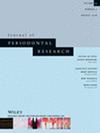Hyperglycemia Exacerbates Periodontal Destruction via Systemic Suppression of Regulatory T Cell Number and Function
Abstract
Aim
Diabetes is a significant risk factor that exacerbates the pathological progression of periodontal disease. In recent years, attention has focused on the effect of regulatory T cells (Tregs), which play a central role in immune tolerance, on inflammatory processes in periodontal tissue, suggesting a link with diabetes-associated periodontitis. In this study, we examined the dynamics of Tregs in periodontal tissue of mice with streptozotocin (STZ)-induced hyperglycemia.
Methods
Eleven-week-old male C57BL/6J mice were divided into four treatment groups: Untreated (C group), ligature placed around the maxillary second molars with silk sutures (PD group), intraperitoneal administration of STZ (HG group), and ligature placed after STZ administration (PHG group). Establishment of hyperglycemia was assessed 14 days after STZ administration, and ligation was performed 7 days later. After another 7 days of ligation, the mice were euthanized. The right side of the maxilla was observed histopathologically, whereas the palatal gingiva on the left side of the maxilla was analyzed genetically, and the microstructure of the alveolar bone was also assessed. In addition, lymphocytes from peripheral blood, spleen, and periodontal tissue were analyzed using flow cytometry.
Results
In bone structure analyses, alveolar bone height, bone volume/tissue volume (BV/TV), and bone mineral density (BMD) were lower in the PHG group than the PD group. In the gingival tissue, expression of the Foxp3 gene was up-regulated in the PHG group compared with the C group, and IL-17a was up-regulated in the PHG group compared with the PD group. Flow cytometry analyses showed that the number of Tregs (CD4+CD25+Foxp3+ cells) in the blood and gingival tissue was significantly higher in the PD and PHG groups than the C group. The number of CD4+CD25−Foxp3+ cells, which are reportedly functionally attenuated as Tregs, was increased in blood of the PHG group. Immunofluorescence staining of periodontal tissue showed that the number of CD25+Foxp3+ cells was significantly increased only in the PD group, whereas a trend toward an increased number of CD25−Foxp3+ cells was observed in the PHG group.
Conclusion
The present study showed that STZ-induced hyperglycemia numerically and functionally attenuates Tregs in a mouse model of experimental periodontitis. Furthermore, impaired immune tolerance capacity appears to be involved in exacerbating inflammation and bone destruction in periodontal tissue.


 求助内容:
求助内容: 应助结果提醒方式:
应助结果提醒方式:


